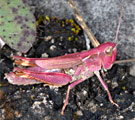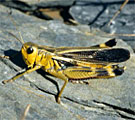Poecilimon brunneri (Frivaldsky, 1867)
![Poecilimon brunneri: Männchen (W-Bulgarien, Oblast Sofia, E Dragoman, Anfang Juni 2018) [N] Poecilimon brunneri: Männchen (W-Bulgarien, Oblast Sofia, E Dragoman, Anfang Juni 2018) [N]](thumbs/tettigoniidae/brunneri_im2018.jpg)
![Poecilimon brunneri: Männchen (W-Bulgarien, Oblast Sofia, E Dragoman, Anfang Juni 2018) [N] Poecilimon brunneri: Männchen (W-Bulgarien, Oblast Sofia, E Dragoman, Anfang Juni 2018) [N]](thumbs/tettigoniidae/brunneri_2im2018.jpg)
![Poecilimon brunneri: Männchen (W-Bulgarien, Oblast Sofia, E Dragoman, Anfang Juni 2018) [N] Poecilimon brunneri: Männchen (W-Bulgarien, Oblast Sofia, E Dragoman, Anfang Juni 2018) [N]](thumbs/tettigoniidae/brunneri_3im2018.jpg)
![Poecilimon brunneri: Männchen (W-Bulgarien, Oblast Sofia, E Dragoman, Anfang Juni 2018) [N] Poecilimon brunneri: Männchen (W-Bulgarien, Oblast Sofia, E Dragoman, Anfang Juni 2018) [N]](thumbs/tettigoniidae/brunneri_4im2018.jpg)
![Poecilimon brunneri: Männchen (W-Bulgarien, Oblast Sofia, E Dragoman, Anfang Juni 2018) [N] Poecilimon brunneri: Männchen (W-Bulgarien, Oblast Sofia, E Dragoman, Anfang Juni 2018) [N]](thumbs/tettigoniidae/brunneri_5im2018.jpg)
![Poecilimon brunneri: Weibchen (W-Bulgarien, Oblast Sofia, E Dragoman, Anfang Juni 2018) [N] Poecilimon brunneri: Weibchen (W-Bulgarien, Oblast Sofia, E Dragoman, Anfang Juni 2018) [N]](thumbs/tettigoniidae/brunneri_6im2018.jpg)
![Poecilimon brunneri: Weibchen (W-Bulgarien, Oblast Sofia, E Dragoman, Anfang Juni 2018) [N] Poecilimon brunneri: Weibchen (W-Bulgarien, Oblast Sofia, E Dragoman, Anfang Juni 2018) [N]](thumbs/tettigoniidae/brunneri_7im2018.jpg)
![Poecilimon brunneri: Männchen (Thrakien, Alexandroupolis, Ende Mai 2019) [N] Poecilimon brunneri: Männchen (Thrakien, Alexandroupolis, Ende Mai 2019) [N]](thumbs/tettigoniidae/brunneri_im2019.jpg)

![Poecilimon brunneri: Männchen (Thrakien, Alexandroupolis, Ende Mai 2019) [N] Poecilimon brunneri: Männchen (Thrakien, Alexandroupolis, Ende Mai 2019) [N]](thumbs/tettigoniidae/brunneri_§im2019.jpg)
![Poecilimon brunneri: Männchen (Thrakien, Alexandroupolis, Ende Mai 2019) [N] Poecilimon brunneri: Männchen (Thrakien, Alexandroupolis, Ende Mai 2019) [N]](thumbs/tettigoniidae/brunneri_4im2019.jpg)
![Poecilimon brunneri: Männchen (Thrakien, Alexandroupolis, Ende Mai 2019) [N] Poecilimon brunneri: Männchen (Thrakien, Alexandroupolis, Ende Mai 2019) [N]](thumbs/tettigoniidae/brunneri_5im2019.jpg)
![Poecilimon brunneri: Männchen (Thrakien, Alexandroupolis, Ende Mai 2019) [N] Poecilimon brunneri: Männchen (Thrakien, Alexandroupolis, Ende Mai 2019) [N]](thumbs/tettigoniidae/brunneri_6im2019.jpg)
![Poecilimon brunneri: Männchen (Thrakien, Alexandroupolis, Ende Mai 2019) [N] Poecilimon brunneri: Männchen (Thrakien, Alexandroupolis, Ende Mai 2019) [N]](thumbs/tettigoniidae/brunneri_7im2019.jpg)
![Poecilimon brunneri: Männchen (Thrakien, Alexandroupolis, Ende Mai 2019) [N] Poecilimon brunneri: Männchen (Thrakien, Alexandroupolis, Ende Mai 2019) [N]](thumbs/tettigoniidae/brunneri_8im2019.jpg)
![Poecilimon brunneri: Männchen (Thrakien, Alexandroupolis, Ende Mai 2019) [N] Poecilimon brunneri: Männchen (Thrakien, Alexandroupolis, Ende Mai 2019) [N]](thumbs/tettigoniidae/brunneri_9im2019.jpg)
![Poecilimon brunneri: Männchen (Thrakien, Alexandroupolis, Ende Mai 2019) [N] Poecilimon brunneri: Männchen (Thrakien, Alexandroupolis, Ende Mai 2019) [N]](thumbs/tettigoniidae/brunneri_10im2019.jpg)
![Poecilimon brunneri: Männchen (Thrakien, Alexandroupolis, Ende Mai 2019) [N] Poecilimon brunneri: Männchen (Thrakien, Alexandroupolis, Ende Mai 2019) [N]](thumbs/tettigoniidae/brunneri_11im2019.jpg)
![Poecilimon brunneri: Männchen (Thrakien, Alexandroupolis, Ende Mai 2019) [N] Poecilimon brunneri: Männchen (Thrakien, Alexandroupolis, Ende Mai 2019) [N]](thumbs/tettigoniidae/brunneri_12im2019.jpg)
![Poecilimon brunneri: Männchen (Ostmakedonien, Alistrati, Anfang Juni 2019) [N] Poecilimon brunneri: Männchen (Ostmakedonien, Alistrati, Anfang Juni 2019) [N]](thumbs/tettigoniidae/brunneri_13im2019.jpg)
![Poecilimon brunneri: Männchen (Ostmakedonien, Alistrati, Anfang Juni 2019) [N] Poecilimon brunneri: Männchen (Ostmakedonien, Alistrati, Anfang Juni 2019) [N]](thumbs/tettigoniidae/brunneri_14im2019.jpg)
![Poecilimon brunneri: Männchen (Ostmakedonien, Alistrati, Anfang Juni 2019) [N] Poecilimon brunneri: Männchen (Ostmakedonien, Alistrati, Anfang Juni 2019) [N]](thumbs/tettigoniidae/brunneri_15im2019.jpg)
![Poecilimon brunneri: Männchen (Thrakien, Alexandroupolis, Ende Mai 2019) [M] Poecilimon brunneri: Männchen (Thrakien, Alexandroupolis, Ende Mai 2019) [M]](thumbs/tettigoniidae/brunneri_16im2019.jpg)
![Poecilimon brunneri: Männchen (Thrakien, Alexandroupolis, Ende Mai 2019) [M] Poecilimon brunneri: Männchen (Thrakien, Alexandroupolis, Ende Mai 2019) [M]](thumbs/tettigoniidae/brunneri_17im2019.jpg)
![Poecilimon brunneri: Weibchen (Thrakien, Alexandroupolis, Ende Mai 2019) [N] Poecilimon brunneri: Weibchen (Thrakien, Alexandroupolis, Ende Mai 2019) [N]](thumbs/tettigoniidae/brunneri_18im2019.jpg)
![Poecilimon brunneri: Weibchen (Thrakien, Alexandroupolis, Ende Mai 2019) [N] Poecilimon brunneri: Weibchen (Thrakien, Alexandroupolis, Ende Mai 2019) [N]](thumbs/tettigoniidae/brunneri_19im2019.jpg)
![Poecilimon brunneri: Weibchen (Thrakien, Alexandroupolis, Ende Mai 2019) [N] Poecilimon brunneri: Weibchen (Thrakien, Alexandroupolis, Ende Mai 2019) [N]](thumbs/tettigoniidae/brunneri_20im2019.jpg)
![Poecilimon brunneri: Weibchen (Thrakien, Alexandroupolis, Ende Mai 2019) [N] Poecilimon brunneri: Weibchen (Thrakien, Alexandroupolis, Ende Mai 2019) [N]](thumbs/tettigoniidae/brunneri_21im2019.jpg)
![Poecilimon brunneri: Weibchen (Thrakien, Alexandroupolis, Ende Mai 2019) [N] Poecilimon brunneri: Weibchen (Thrakien, Alexandroupolis, Ende Mai 2019) [N]](thumbs/tettigoniidae/brunneri_22im2019.jpg)
![Poecilimon brunneri: Weibchen (Thrakien, Alexandroupolis, Ende Mai 2019) [N] Poecilimon brunneri: Weibchen (Thrakien, Alexandroupolis, Ende Mai 2019) [N]](thumbs/tettigoniidae/brunneri_23im2019.jpg)
![Poecilimon brunneri: Weibchen (Thrakien, Alexandroupolis, Ende Mai 2019) [N] Poecilimon brunneri: Weibchen (Thrakien, Alexandroupolis, Ende Mai 2019) [N]](thumbs/tettigoniidae/brunneri_24im2019.jpg)
![Poecilimon brunneri: Weibchen (Ostmakedonien, Alistrati, Anfang Juni 2019) [N] Poecilimon brunneri: Weibchen (Ostmakedonien, Alistrati, Anfang Juni 2019) [N]](thumbs/tettigoniidae/brunneri_25im2019.jpg)
![Poecilimon brunneri: Weibchen (Thrakien, Alexandroupolis, Ende Mai 2019) [M] Poecilimon brunneri: Weibchen (Thrakien, Alexandroupolis, Ende Mai 2019) [M]](thumbs/tettigoniidae/brunneri_26im2019.jpg)
![Poecilimon brunneri: Weibchen (Thrakien, Alexandroupolis, Ende Mai 2019) [M] Poecilimon brunneri: Weibchen (Thrakien, Alexandroupolis, Ende Mai 2019) [M]](thumbs/tettigoniidae/brunneri_27im2019.jpg)
![Poecilimon brunneri: Weibchen (Thrakien, Alexandroupolis, Ende Mai 2019) [M] Poecilimon brunneri: Weibchen (Thrakien, Alexandroupolis, Ende Mai 2019) [M]](thumbs/tettigoniidae/brunneri_28im2019.jpg)
![Poecilimon brunneri: Männchen und weibliche Larve (Ostmakedonien, Alistrati, Anfang Juni 2019) [N] Poecilimon brunneri: Männchen und weibliche Larve (Ostmakedonien, Alistrati, Anfang Juni 2019) [N]](thumbs/tettigoniidae/brunneri_29im2019.jpg)
![Poecilimon brunneri: Männliche Larve (Thrakien, Alexandroupolis, Ende Mai 2019) [N] Poecilimon brunneri: Männliche Larve (Thrakien, Alexandroupolis, Ende Mai 2019) [N]](thumbs/tettigoniidae/brunneri_30im2019.jpg)
![Poecilimon brunneri: Weibliche Larve (Thrakien, Alexandroupolis, Ende Mai 2019) [N] Poecilimon brunneri: Weibliche Larve (Thrakien, Alexandroupolis, Ende Mai 2019) [N]](thumbs/tettigoniidae/brunneri_31im2019.jpg)
![Poecilimon brunneri: Habitat (W-Bulgarien, Oblast Sofia, E Dragoman, Anfang Juni 2018) [N] Poecilimon brunneri: Habitat (W-Bulgarien, Oblast Sofia, E Dragoman, Anfang Juni 2018) [N]](thumbs/tettigoniidae/brunneri_h2018.jpg)
![Poecilimon brunneri: Habitat (W-Bulgarien, Oblast Sofia, E Dragoman, Anfang Juni 2018) [N] Poecilimon brunneri: Habitat (W-Bulgarien, Oblast Sofia, E Dragoman, Anfang Juni 2018) [N]](thumbs/tettigoniidae/brunneri_2h2018.jpg)
![Poecilimon brunneri: Habitat (Thrakien, Alexandroupolis, Ende Mai 2019) [N] Poecilimon brunneri: Habitat (Thrakien, Alexandroupolis, Ende Mai 2019) [N]](thumbs/tettigoniidae/brunneri_h2019.jpg)
![Poecilimon brunneri: Habitat (Thrakien, Alexandroupolis, Ende Mai 2019) [N] Poecilimon brunneri: Habitat (Thrakien, Alexandroupolis, Ende Mai 2019) [N]](thumbs/tettigoniidae/brunneri_2h2019.jpg)
Lebensraumansprüche:
Poecilimon brunneri besiedelt Magerrasen, Weiden, Staudenfluren, Brachland, offenes Buschland und ähnliche Stellen.
Entwicklungszyklus:
Die Imagines treten je nach Gebiet von Mai oder Juni bis Juli oder August auf.
The adults occur between May or June to July or August, according to region.
Gefährdungsursachen:
An den lokalen Fundstellen an der Peripherie (Ungarn, Serbiet etc.) ist Poecilimon brunneri stark durch Lebensraumveränderungen (Intensivierung, Überbauung) bedroht.
Bemerkungen:
Poecilimon brunneri kommt in SE-Europa vor: sehr lokal in Ungarn (Umgebung Budapest), Teile Serbiens, Mazedonien, N-Griechenland, Bulgarien, europäische Türkei, SW- und E-Rumänien, möglicherweise auch SW-Ukraine.
Poecilimon affinis | Poecilimon amissus | Poecilimon ampliatus | Poecilimon artedentatus | Poecilimon chopardi | Poecilimon cretensis | Poecilimon ebneri | Poecilimon ege | Poecilimon elegans | Poecilimon erimanthos | Poecilimon fussii | Poecilimon gerlindae | Poecilimon gracilis | Poecilimon hamatus | Poecilimon hoelzeli | Poecilimon intermedius | Poecilimon jonicus | Poecilimon laevissimus | Poecilimon macedonicus | Poecilimon mariannae | Poecilimon miramae | Poecilimon mytilenensis | Poecilimon nobilis | Poecilimon obesus | Poecilimon orbelicus | Poecilimon ornatus | Poecilimon pergamicus | Poecilimon propinquus | Poecilimon sanctipauli | Poecilimon schmidtii | Poecilimon superbus | Poecilimon sureyanus | Poecilimon thessalicus | Poecilimon thoracicus | Poecilimon turcicus | Poecilimon veluchianus | Poecilimon werneri | Poecilimon zimmeri | Poecilimon zwicki


